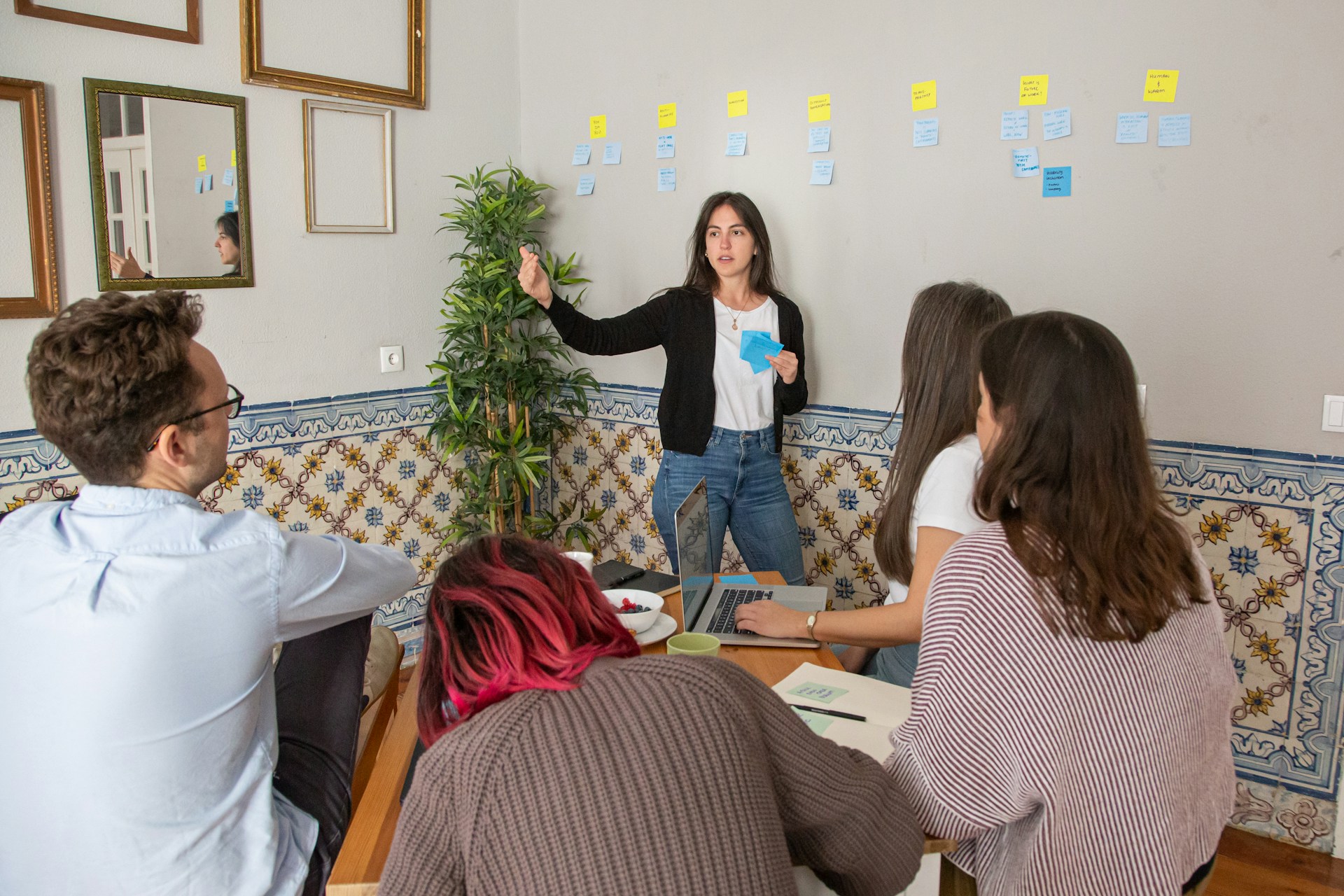Diversity & Inclusion: Why It's Essential & Changing Workplace Culture

The fight against discrimination is at the heart of contemporary social actions. This is why diversity and inclusion are significant themes in human resources management and corporate social responsibility departments.However, you should not pursue a policy of inclusion purely for fear of reprisals performance management or a desire to keep up with the latest management trends. You might not be aware that diversity and inclusion are actually fundamental guarantees of business performance, and there are sound economic reasons for their promotion apart from ethics. Indeed, workplace inclusivity and diversity promotes innovation, creativity and productivity.A recent study by the consulting firm Deloitte recently revealed that an inclusive policy would generate up to 30% more turnover per employee.
Diversity and inclusion, what exactly do they mean?
The definition of diversity
Diversity represents a variety of profiles within a company with the protected characteristics listed in the Equality Act 2010, including age, sex, ethnicity, cultural diversity, religion, gender identity, sexual orientation, and physical disability. Professional workplace diversity can therefore be visible or invisible, which is the case for sexual orientation, religion or specific disabilities, for example. Taken together, this great diversity of profiles then represents a single entity, the company in this case.Visible diversity can include culture, ethnicity/race, nationality, gender, age, and mental or physical condition (the latter often referred to as disability).Invisible diversity can include thoughts, perspectives and life experiences, including education, family status, values/beliefs, work-related style preferences, and socioeconomic status.Other dimensions of diversity that may or may not be visible include sexual orientation, religion, language and veteran status.
The definition of inclusion
Inclusion is more about the decision to integrate a person into a group, the company in this case. In an inclusive society, each employee feels at home and as if they belong. This requires good team cohesion, autonomy and accountability in assignments and valuing work. Inclusion is, therefore, opposed to exclusion, segregation or even discrimination.
The differences between diversity and inclusion
In short, diversity is a fact, while inclusion is a choice. Diversity is about surrounding yourself with different people. Inclusion is about working with different people without pointing out that they are different. All employees are then treated on the same professional basis. As Vernā Myers, an American activist, says: "Diversity is about being invited to the party. Inclusion is being invited to dance."Unfortunately, an organization can have a high diversity without being inclusive, which obviously creates tensions and conflicts. One example is the only woman on a civil engineering course who was too short to use a piece of equipment. Inclusion is closely aligned to equality. Treating employees equally doesn't necessarily mean treating them exactly the same; sometimes reasonable adjustments have to be made, in this example, the provision of a stool for the female civil engineer.To avoid such a scenario happening in the first place, you must align the company's human resources policy and managerial strategy. And for a good reason, diversity is more a matter of recruitment, while inclusion is a matter of management.Diversity without inclusion is not enough.We’ve explained that diversity and inclusion are not synonymous terms, but they are interdependent.As we saw above, an organization can be diverse but not inclusive. Business leaders don't always understand that having people from varied backgrounds is just one aspect of the concept. Without creating a sense of acceptance and respect, an organization cannot be characterized as diverse and inclusive.To attract talent from all walks of life, you need to have a system in place that fosters innovation, encourages participation, and drives business growth.
The benefits of diversity and inclusion in the workplace
Diversity and inclusion are not just HR trends. First of all, discrimination is punishable by law. Thus, a company (legal entity) that demonstrates discrimination in hiring faces a fine of potentially hundreds of thousands of pounds and an order to cease trading. An employer could face a fine of up to €45,000 and three years in prison.Beyond the legal framework, a diversity and inclusion policy is a lever of economic performance for the company. According to a McKinsey global survey, companies in the top quartile for ethnic diversity are 35% more likely to have financial performance above the median for their national industry. And promoting diversity in the workplace amounts to selecting profiles based solely on their skills and knowledge. In other words, choosing the best talent on the market. Moreover, inclusion promotes cohesion and team spirit. In addition, employees who feel integrated and valued are far more likely to be loyal. The turnover rate thus decreases, allowing savings on the cost of hiring and recruiting.While an inclusion strategy is a criterion for loyalty, it also contributes to the attractiveness and retention of talent and as such is aligned with the principles of frugal innovation. According to the International Labor Office, companies with a strong inclusion policy have a 60% greater chance of increasing their profits, having a better reputation and attracting new profiles later. Why wouldn't you want to boost your company's brand presence in such a positive way?
How to guarantee diversity and inclusion at work?
Recruitment by skills and profession
As mentioned earlier, the first link to good diversity in corporate culture is recruitment. Recruiters must base their choices on skills and professional experience criteria, not on religious opinion, gender, or age - in short, everything considered discriminatory today.Recruiting through skills then comes down to analyzing three criteria:
- Knowledge: skills and theoretical knowledge acquired during studies or training (hard skills)
- Know-how: putting theoretical knowledge into practice interpersonal skills: a set of skills and human qualities, such as autonomy, adaptability, creativity, emotional intelligence (soft skills)
- Recruitment by profession comes down to looking at the candidate's qualifications and career path. These two recruitment approaches are not mutually exclusive. On the contrary, they complement each other for fair and egalitarian hiring that promotes diversity in recruitment without falling into positive discrimination.
Evaluate the workplace
Few would argue that barriers and inaccessibility features are designed with the specific intention of preventing people with disabilities from entering the workforce. However, identifying barriers that may have been inadvertently created and maintained in a company's HR policies and protocols (for example, by "continuing to do things the way they always were") can help those who are disabled. Conduct an accessibility audit or a survey involving all stakeholders to see how policies and protocols could be improved.Assessing and challenging accessibility in the workplace should consider all aspects of the job, including the workplace and the hiring process (i.e. (job posting and selection of resumes for interviews and orientation of new employees).
Equal treatment for all employees
Inclusion in business is primarily about equity. In other words, all employees must be treated on the same footing, be it salary, working conditions, workload, holidays, access to certain services, etc. example, through parity between women and men with the development of female leadership. No favoritism in the management style, and even less if based on discrimination criteria, can then be tolerated.
Teamwork
Diversity management in the company comes down to creating a real sense of belonging and team cohesion to form one. In addition, promoting mutual assistance is the best way to guard against the exclusion of a person. Concretely, this translates into regular exchange meetings through brainstorming sessions or less formal moments, for example. Team building workshops are also essential to strengthen team spirit. Blindfolded tours, treasure hunts, escape rooms, murder mystery events - the list is endless. Here is a non-exhaustive list of fun activities to practice in groups to build trust between employees, teamwork and collective performance. Finally, after work socialization opportunities (Friday evening drinks, dinners at the restaurant, etc.) are popular and allow real connections to be forged outside the workplace.In addition, collaborative tools or collaborative business networks (CSR) greatly facilitate collaboration between teams. And for good reason, these tools stimulate collective intelligence by facilitating the sharing of information. You may also wish to consider your company's digital culture as technology is often by no means indiscriminate as we have seen by many AI scandals reported in the media.
How to boost employee awareness of diversity and inclusion
Inclusion at work should not come only from management and human resources. All employees must share the values of the company. To do this, it is important to spread the corporate culture through workshops and training. This diversity awareness can occur through thematic newsletters, fun and educational seminars, and engagement with local associations. Leaders and middle managers could also benefit from seminars or conferences on subjects such as communication and intercultural management, neuromanagement, matrix management, and inclusive management. The objective is then to deconstruct stereotypes and point the finger at inequalities.The best thing, however, is to recruit a diversity manager within the company. The latter will then have the role of making employees aware of diversity and inclusion issues and combating discrimination within society if encountered.
Meaningful conflict management policy
Conflict between employees is a typical crisis situation in the life of a company, especially in companies where diversity is high. However, a poorly managed conflict situation can undermine anything that has been built over the years. It is, therefore, necessary to put in place an effective and sustainable mediation system. This involves, first of all, transmitting the company's values to make them values common to all employees. Next, it is essential to apply an agile project management style to facilitate discussion in the event of problems encountered.If, however, a conflict does arise, communication remains the key. And effective communication begins with active and attentive listening to find common ground. So, while the ideal is obviously to find a win-win solution, sometimes you have to make compromises.
Exploring new concepts that can aid diversity and inclusion
Human-centered design is an innovative problem-solving methodology that looks at the people for whom a product is designed. As it focuses on end-users, this method is associated with positive results and outcomes aimed at reducing systemic barriers while improving inclusion and engagement.Universal design is an architectural accessibility term initially used to describe buildings and public spaces. Nowadays, universal design aims to create products, environments and systems that can be used to the maximum by everyone without needing to be first adapted (for example, design within mind human diversity, equity and social inclusion).A growth mindset, prevalent in the educational sector, refers to the idea that it is always possible to develop talent. Learning is viewed as a constant process, and improvements can often be made on a continuous trajectory. You can apply growth mindset theory to improving inclusion and diversity when thinking about recruitment selection credentials. For example, expanding the pool of potential candidates with the understanding that potential growth is an untapped source of wealth could pay dividends for your organization.
Coaching to support diversity and inclusion
The manager has a fundamental role in the company's inclusion policy, and toxic managers can have a massive impact on employee turnover rates. Therefore, they must be exemplary in their behavior, even though remote management. And for a good reason, the values of diversity and inclusion are first transmitted by superiors. Through positive leadership, the manager also creates a space of trust that authorizes the right to be tried, the right to make mistakes and the right to be vulnerable. In this way, he reinforces the personal confidence of his teams. To establish diversity management, coaching managers is therefore essential. On the way to managerial innovation.On the employee side, professional coaching helps develop the necessary soft skills, such as assertiveness or resilience. Not to mention that coaching is the best way to convey the values of the company, whether it aims to be a liberated company or one focused on innovation management.Managers and leaders alike are encouraged to show receptiveness to new perspectives and ideas and motivate people at all levels and from all walks of life to voice their opinions in meetings and brainstorming sessions. In addition to ensuring that everyone is treated equally, it helps avoid the pitfall of "group thinking" and leaves no interesting idea unanswered, a way to provide inclusive leadership over time with the resulting practices that allow everyone to express their potential.A large majority expects the commitment of companies to improve equal opportunities in the workplace of employees. Working on digital coaching programs around these themes is a way of reconciling the announcements made at the global level (buyout, acquisition, geographic extension) and the corporate culture perceived at the local level through a more personalized and interactive format than e-learning. Today, it is no longer a question of thinking about how to do it but of taking concrete action by highlighting the wealth of profiles to make things happen in the right direction and make them a real competitive advantage.
FAQ
Yes, executive coaching plays a key role in retaining and engaging senior leaders by giving them space to reflect, grow, and lead with purpose. Through individualized support, executives strengthen communication, decision-making and resilience — all of which drive engagement and long-term satisfaction.
With CoachHub Executive™, organizations not only see improved leadership performance but also greater alignment, motivation and confidence among their top talent, resulting in higher retention and a stronger leadership pipeline.
CoachHub Executive™ goes beyond one-to-one sessions by integrating technology, measurable insights and continuous learning into every coaching journey. Each executive benefits from personalized matching with certified coaches and flexible session formats to reinforce development between sessions.
While traditional coaching often lacks scalability or measurable tracking, CoachHub ensures impact visibility through data-driven dashboards, 24/7 scheduling flexibility and a consistent, high-quality experience for leaders worldwide, that can be tailored to your organization's goals.
Yes, executive coaching is delivered across 90 countries in 40+ languages, with localized coach networks that meet the cultural and business needs of global organizations.




.svg)


.svg)

.jpeg)



.png)



